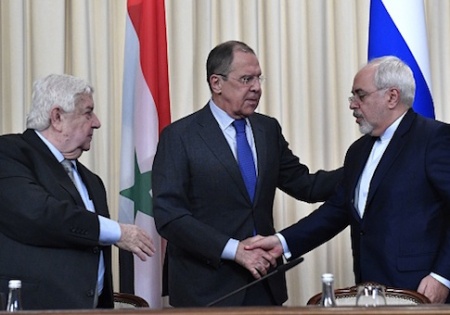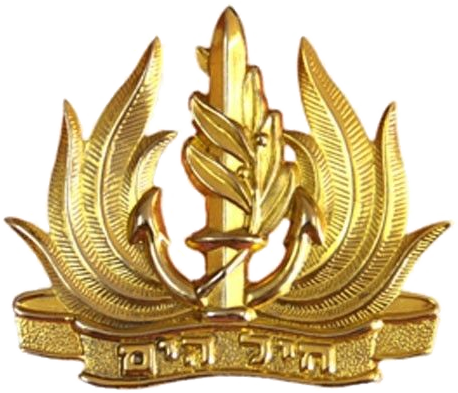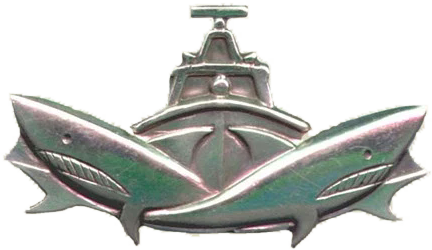In Syria, Trump’s Red Line May be Holding, Front Page Magazine, Joseph Klein, June 29, 2017

It is not only what Assad has been doing in unleashing his ghastly chemical weapons on his own people, causing horrible suffering in their wake, which demands our attention. After all, Assad has been causing such suffering with conventional weapons as well, including his use of barrel bombs, which we have repeatedly condemned but have not taken specific military action to stop. To do so would almost inevitably draw us into a wider war. What makes chemical and other weapons of mass destruction different is their potential proliferation to the very Islamic terrorists we are trying to defeat.
**************************
Secretary of Defense Jim Mattis claimed Wednesday that the Syrian regime has drawn back from plans to conduct another chemical attack, following a warning by the Trump administration of serious consequences if Syrian President Bashar al-Assad’s forces followed through with their plans.
U.S. intelligence detected “active preparations for chemical weapons use” at the same air base from which the regime allegedly had launched its prior chemical attack last April that caused mass casualties. President Trump had responded to the April chemical attack with a barrage of cruise missiles targeting that air base. The White House issued its public warning to the Assad regime on Monday in unambiguous terms, declaring that Assad and his military would pay a “heavy price” if his regime conducted another chemical attack.
“It appears that they took the warning seriously. They didn’t do it,” Mattis told reporters.
Nikki Haley, the U.S. ambassador to the United Nations, went even further in crediting the Trump administration for stopping Assad at least for now. “I can tell you that due to the President’s actions, we did not see an incident,” Ambassador Haley claimed at a House of Representatives foreign affairs committee hearing. “I would like to think that the President saved many innocent men, women and children.”
It is difficult to prove what may have actually motivated Assad. In any case, whether Assad holds back for good remains to be seen. But we do know the Trump administration is watching constantly for any moves by the Assad regime that could signal an imminent chemical attack and has military assets in place to swiftly respond to such an attack, if not prevent one in the first place.
President Trump not only demonstrated last April that he would follow through on his threats if certain red lines of his were crossed, unlike our previous president. In addition to its warning, the Trump administration may have sent some concrete signals to the Assad regime that it means business this time as well. According to Debkafile, “Signs were gathering in Washington and the Middle East Tuesday, June 26 that the Trump administration was preparing a substantial military operation against the Syrian army and Bashar Assad’s allies, such as the foreign pro-Iranian Shiite militias and Hizballah. Some US military sources suggested that an American preemptive strike was in store in the coming hours to prevent Assad’s army from again resorting to chemical warfare against his people.”
Assad may still decide to launch another chemical attack, figuring that his key allies, particularly Russia, will continue to back him. No doubt, he took note of Russia’s stern response to the U.S.’s downing of a Syrian warplane earlier this month, including a warning from the Russian Defense Ministry that “All kinds of airborne vehicles, including aircraft and UAVs of the international coalition detected to the west of the Euphrates River will be tracked by the Russian SAM systems as air targets.” The Syrian regime had also already taken some precautions by moving most of its operational aircraft to a Russian airbase in Syria after the April missile strike. The Russian airbase is protected by fairly advanced air defense systems. An American missile strike on Syrian aircraft located at a Russian air base would in all likelihood be seen as a major escalation of the war by the Russian government, risking a direct military confrontation between U.S. and Russia that the Trump administration may be loath to risk. As if to thumb his nose at the Trump administration’s latest threats by demonstrating the strength of his military alliance with Russia, Assad was seen strutting around a Russian air baseinspecting its aircraft and defense systems. He was even photographed sitting in the cockpit of a Russian fighter jet.
Indeed, Russia appears ready to raise the stakes to bolster the Syrian dictator’s regime. Debkafile reports that Russia is “building a new base in southeastern Syria,” which would “provide Russia with a lever of control over the volatile Syrian southeast and its borders, where US-backed and Iranian-backed forces are fighting for dominance.”
As Russia raises the stakes, the U.S. must be clearer than ever as to its strategic objectives in Syria, which it is willing to back up with military force even in the face of Russian threats. We must do all we can to prevent getting sucked into Syria’s civil war, including by undertaking any military efforts at regime change. That said, we must repel any military action by the Syrian regime or its allies that would prevent us from prosecuting the war against ISIS, which remains our number one objective until the ISIS sanctuaries, infrastructure and leadership are for all intents and purposes destroyed.
However, we also cannot ignore the threat that Assad’s chemical weapons program continues to pose. The Obama administration had thought that it had largely eliminated the threat “diplomatically,” when it reached a phony deal with Russia to oversee the removal and destruction of the Syrian regime’s declared chemical weapons. The opportunity for cheating was all too plain to see, except by Obama and his clueless Secretary of State John Kerry. We are now seeing the consequences. According to Secretary of Defense Mattis, Syria’s chemical program remains intact.
It is not only what Assad has been doing in unleashing his ghastly chemical weapons on his own people, causing horrible suffering in their wake, which demands our attention. After all, Assad has been causing such suffering with conventional weapons as well, including his use of barrel bombs, which we have repeatedly condemned but have not taken specific military action to stop. To do so would almost inevitably draw us into a wider war. What makes chemical and other weapons of mass destruction different is their potential proliferation to the very Islamic terrorists we are trying to defeat. The transfer of chemical or biological weapons to terrorist hands would represent the most dangerous outcome of the Syrian conflict to the rest of the world, including to the United States. That is why we must monitor where we believe Assad’s remaining chemical weapons and production facilities are located, prevent them from being used or even moved from known locations, do all that we can to keep them out of the hands of the terrorists and destroy the chemical weapons and production facilities when the opportunity presents itself.











Recent Comments